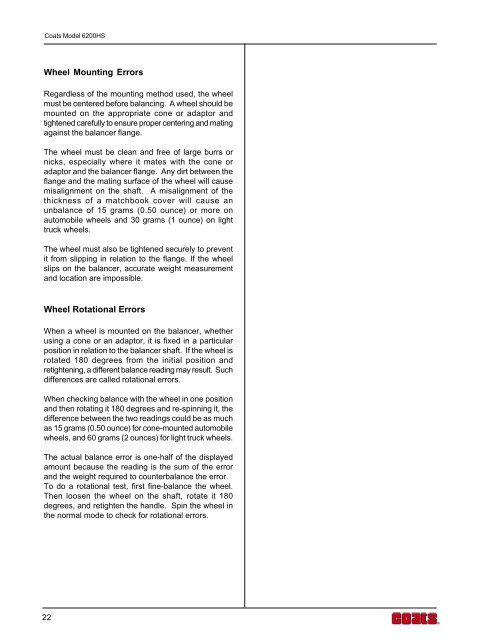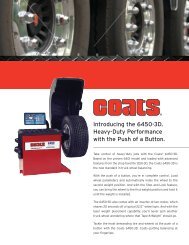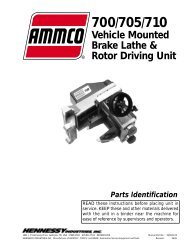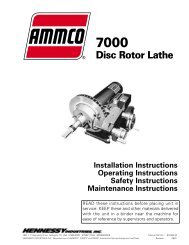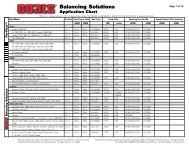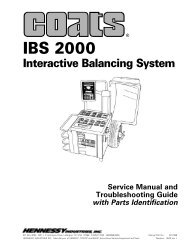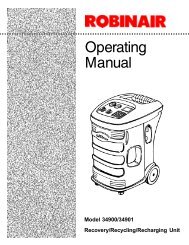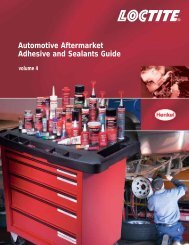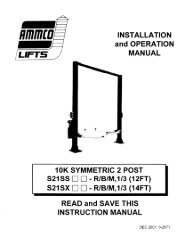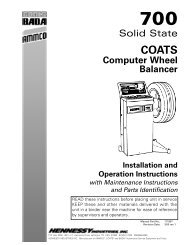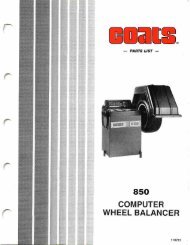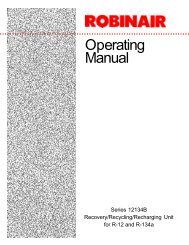Truck Wheel Balancer OPERATION GUIDE - NY Tech Supply
Truck Wheel Balancer OPERATION GUIDE - NY Tech Supply
Truck Wheel Balancer OPERATION GUIDE - NY Tech Supply
Create successful ePaper yourself
Turn your PDF publications into a flip-book with our unique Google optimized e-Paper software.
Coats Model 6200HS<strong>Wheel</strong> Mounting ErrorsRegardless of the mounting method used, the wheelmust be centered before balancing. A wheel should bemounted on the appropriate cone or adaptor andtightened carefully to ensure proper centering and matingagainst the balancer flange.The wheel must be clean and free of large burrs ornicks, especially where it mates with the cone oradaptor and the balancer flange. Any dirt between theflange and the mating surface of the wheel will causemisalignment on the shaft. A misalignment of thethickness of a matchbook cover will cause anunbalance of 15 grams (0.50 ounce) or more onautomobile wheels and 30 grams (1 ounce) on lighttruck wheels.The wheel must also be tightened securely to preventit from slipping in relation to the flange. If the wheelslips on the balancer, accurate weight measurementand location are impossible.<strong>Wheel</strong> Rotational ErrorsWhen a wheel is mounted on the balancer, whetherusing a cone or an adaptor, it is fixed in a particularposition in relation to the balancer shaft. If the wheel isrotated 180 degrees from the initial position andretightening, a different balance reading may result. Suchdifferences are called rotational errors.When checking balance with the wheel in one positionand then rotating it 180 degrees and re-spinning it, thedifference between the two readings could be as muchas 15 grams (0.50 ounce) for cone-mounted automobilewheels, and 60 grams (2 ounces) for light truck wheels.The actual balance error is one-half of the displayedamount because the reading is the sum of the errorand the weight required to counterbalance the error.To do a rotational test, first fine-balance the wheel.Then loosen the wheel on the shaft, rotate it 180degrees, and retighten the handle. Spin the wheel inthe normal mode to check for rotational errors.22


